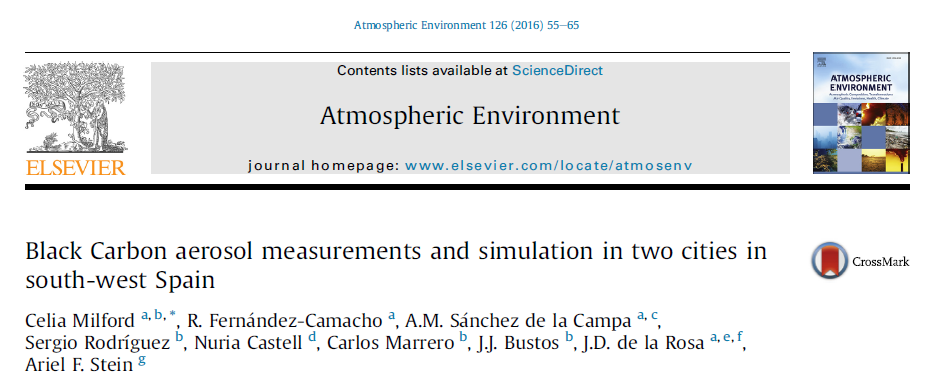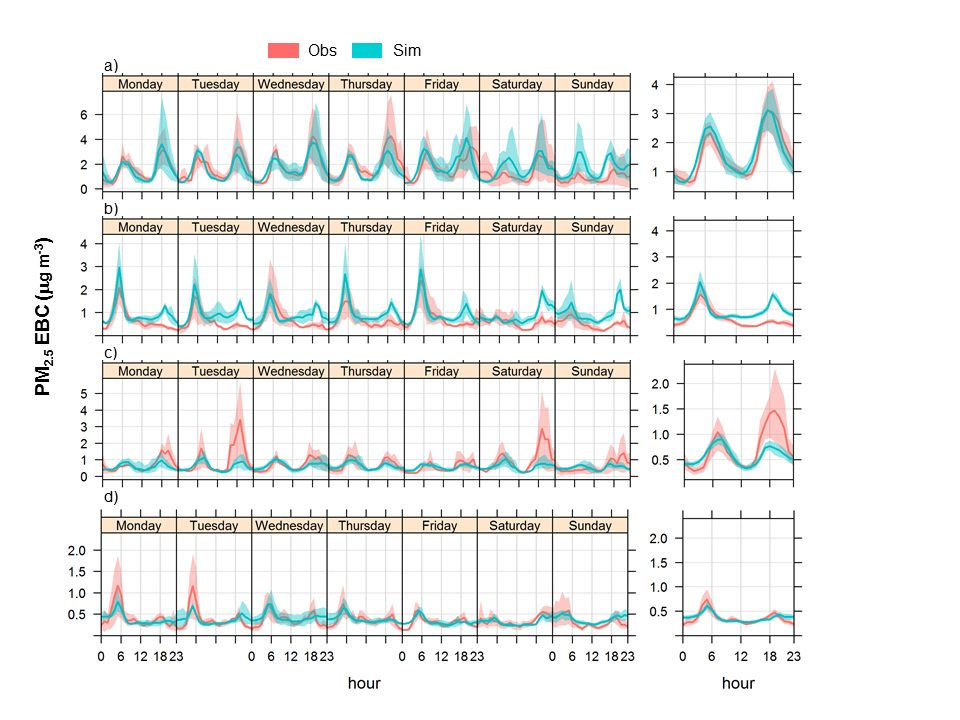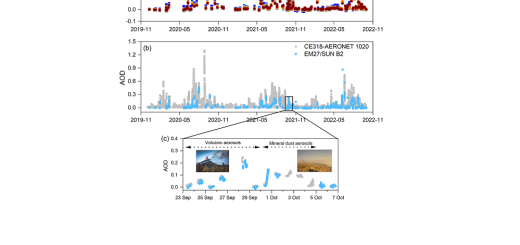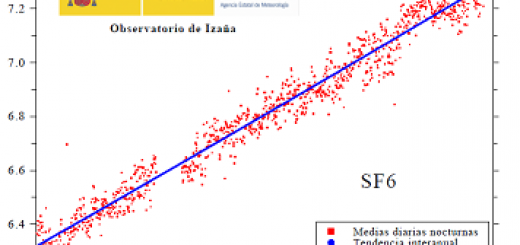New study published in Atmospheric Environment: “Black Carbon aerosol measurements and simulation in two cities in south-west Spain”
![]()

The journal Atmospheric Environment has published a new study on Black Carbon aerosol measurements and simulation in two cities in south-west Spain.
Black Carbon (BC) is a short-lived climate pollutant (SLCP) produced by the incomplete combustion of fossil fuels and biomass. It contributes to global warming, and in addition, is a component of fine particulate matter (PM2.5) associated with negative effects on health (cardiovascular diseases and cancer). Therefore, reducing its emissions has a co-benefit of reducing global warming in the short-term and improving air quality at the same time.
The objective of the new study is to identify sources of black carbon that predominate in the south of Spain. The study was carried out in Andalusia using a multidisciplinary approach. Black carbon measurements were conducted over several months in Seville and Huelva. In addition, simulations using numerical models were performed to study the spatial and temporal variability of this pollutant in the study region. The Black Carbon simulations captured the large diurnal, seasonal and day to day variability in concentrations in these urban areas.
One potential climate change mitigation option is to reduce Black Carbon emissions from diesel vehicles. This is particularly relevant in Spain as the percentage of diesel passenger cars has risen from 15% of the total in 1995 to 55% in 2013. The results presented here suggest that targeted mitigation strategies, for example reducing the heaviest diesel emitters in wintertime, would provide the greatest benefits for the climate, for air quality and the resulting improvement for public health.

Figure. Mean diurnal observed and simulated PM2.5 EBC concentrations for each day of the week for Príncipes, Seville during a) January 2013 and b) June 2013 and at Univ Campus, Huelva, during c) January 2013 and d) June 2013. Also shown are the mean diurnals calculated for all data for each period in the right-hand panel. Shaded areas represent 95% confidence interval in the mean. Graphics were generated with Openair software (Carslaw and Ropkins, 2012).
This work was conducted by the University of Huelva, the Izaña Atmospheric Research Center (AEMET), the Norwegian Institute for Air Research (NILU) and the Air Resources Laboratory of the National Oceanic and Atmospheric Administration (NOAA). The work was carried out within the framework of various research projects funded by the Department of Innovation, Science and Enterprise (SIMAND: P07-460 RNM-02729 and 2011RNM-7800) and the Department of Environment (project: 199/2011/C/00) of the Andalusian Regional Government.
Publication:
Authors: Celia Milford, Rocío Fernández-Camacho, Ana María Sánchez de la Campa, Sergio Rodríguez, Nuria Castell, Carlos Marrero, Juan José Bustos, Jesús de la Rosa, Ariel F. Stein.
Title: Black Carbon aerosol measurements and simulation in two cities in south-west Spain.
Journal: Atmospheric Environment (126), 55–65.
Article available at: http://www.sciencedirect.com/science/article/pii/S1352231015305331







